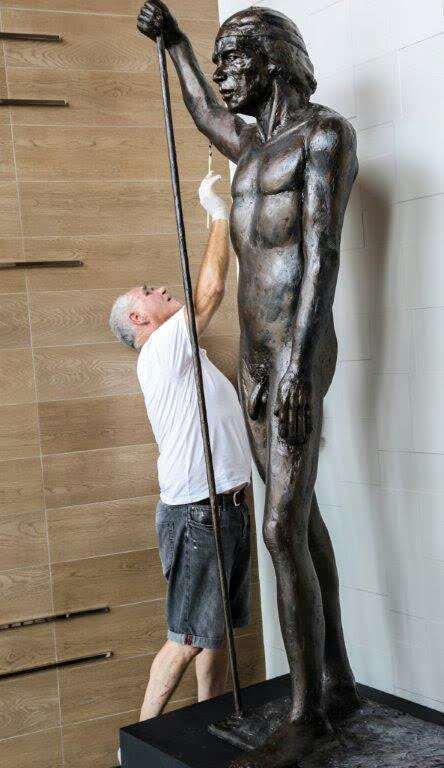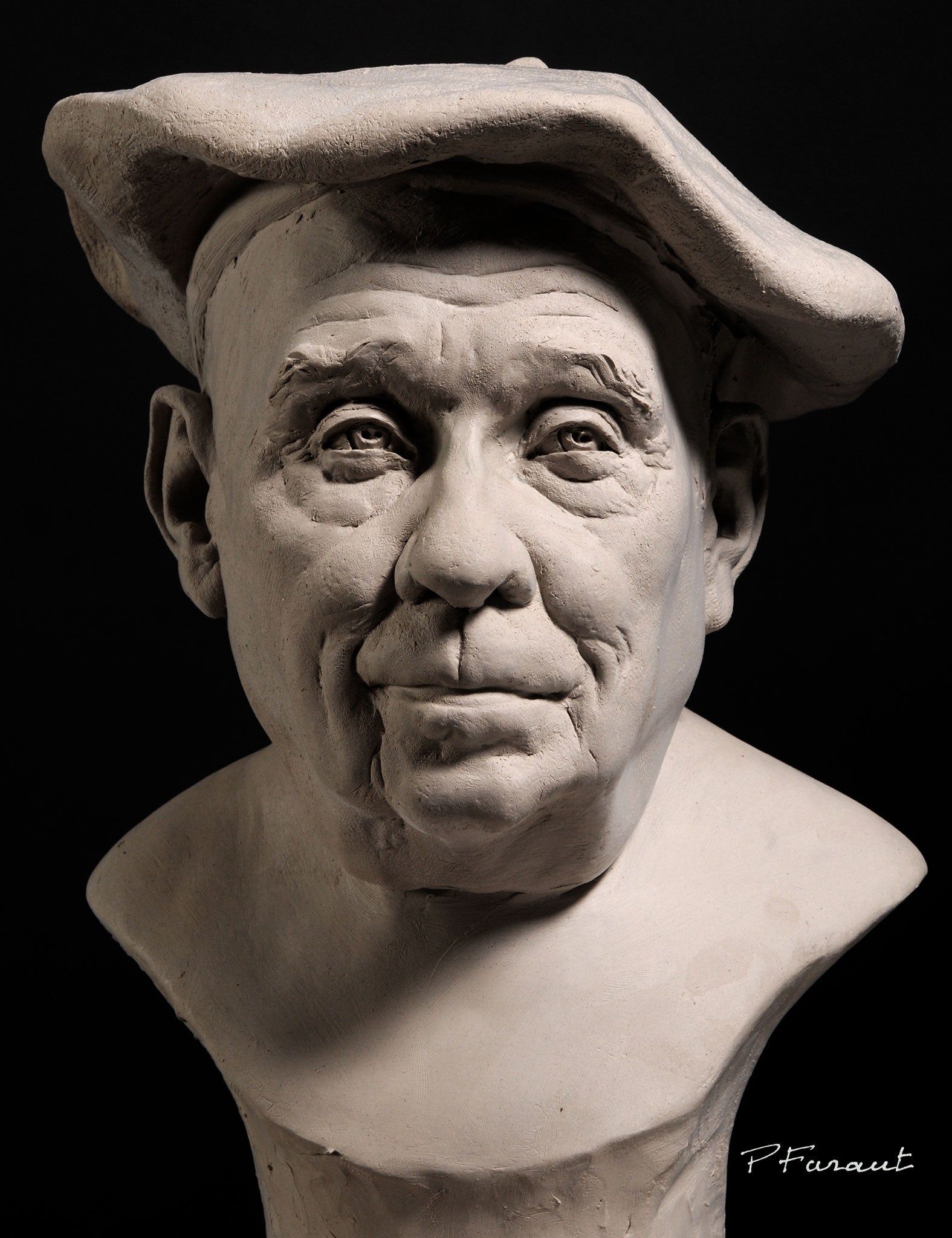Bronze Sculptures: Timeless Artistry Cast in Bronze
Wiki Article
Sculptures as an Expression of Human Feelings
Sculptures have actually long been admired as a powerful medium for revealing the midsts and intricacies of human emotions. Through the competent control of type, structure, and structure, carvers have the capacity to catch the abstract essence of joy, unhappiness, love, rage, and hope. These concrete jobs of art function as a graph of the variety of feelings that define the human experience. From the tranquil appeal of a smiling face to the raw intensity of a contorted number, sculptures offer a classic and special home window right into the globe of human emotions. With each carve stroke and clay molding, sculptors take a breath life into their developments, permitting us to resonate and link with the emotional narratives they convey. In this exploration, we will look into the profound impact that sculptures have in expressing and stimulating human feelings.The Power of Catching Happiness and Happiness
The fundamental power of sculptures depends on their capability to record and convey the extensive emotions of pleasure and happiness with the proficient control of form and material. Sculptures have been utilized throughout history as a way of sharing human emotions, and delight and joy are amongst one of the most usual feelings illustrated in these art forms.Among the means sculptures record joy and happiness is via the cautious choice and manipulation of form. Artists make use of different techniques to produce sculptures that stimulate a feeling of happiness, such as depicting numbers in uplifting and dynamic positions, or utilizing moving contours and lines to create a sense of movement and energy. The choice of material additionally plays a significant role in sharing these feelings. Carvers typically make use of products that have an all-natural heat and vibrancy, such as bronze or marble, to improve the happy and cheerful high qualities of their work.
Moreover, the experienced usage of facial expressions and gestures in sculptures can successfully share pleasure and joy. Artists meticulously shape the smiles, giggling, and expressions of joy on the faces of their topics, bringing them to life and recording the significance of these emotions. The positioning of the body and the motions depicted by the sculpture can additionally interact a feeling of happiness and joy, whether it is a number with outstretched arms, dancing, or welcoming others.
Discovering the Depths of Unhappiness and Sadness
An expedition into the depths of despair and sadness can be attained via the evocative sculptures that catch the significance of these profound emotions. These sculptures offer as an aesthetic representation of the human experience, enabling audiences to link with their very own feelings of unhappiness and sorrow on a much deeper degree.With the skilled manipulation of type, expression, and texture, carvers can communicate the complicated feelings linked with sadness and sorrow. Using lengthened, hunched numbers or contorted, uneasy expressions can evoke a sense of anguish and despair. The option of products, such as chilly, harsh stone or dark, weathered metal, can better enhance the mournful and melancholic mood of the sculptures.
Moreover, the power of these sculptures hinges on their ability to go beyond language barriers - Contemporary Sculptures. No matter etymological or cultural distinctions, the global language of art permits individuals from diverse backgrounds to connect and understand with the emotions represented in these sculptures. Contemporary Sculptures. It is through this common experience that a sense of catharsis and understanding can be attained
Unveiling the Complexity of Love and Desire
Unveiling the intricacies of love and longing, sculptures provide an extensive expedition into the complexity of love and wish. Via making use of different materials and methods, carvers have actually had the ability to catch the significance of these powerful feelings and convey them in substantial forms. Love, with its many dimensions and subtleties, is a topic that has actually astounded musicians throughout history. From the tender accept of a pair to the passionate complexity of bodies, sculptures have portrayed the varied expressions of love and wish.One such instance is Auguste Rodin's legendary sculpture, "The Kiss." This work of art portrays 2 fans secured an intimate embrace, their bodies entwined in a minute of intense enthusiasm. The sculpture not just catches the physical connection between the fans however also evokes a deeper psychological bond. The elaborate details and the skillful workmanship highlight the intricacy of their love and need.
Sculptures additionally explore the darker side of love and desire, unveiling the complexities that can arise from these extreme feelings. Contemporary Sculptures. Some sculptures illustrate the torture and misery that can accompany unrequited love or the destructive power of compulsive need. These artworks function as a suggestion that love and wish can be both challenging and attractive, bringing happiness and pain in equal step
Sharing Temper and Aggravation With Sculptures
Through the representation of bent types and stressful positions, sculptures express the intensity of temper and aggravation. Musicians have long turned to the medium of sculpture to communicate these powerful feelings, making use of different strategies to record the raw power and chaos connected with anger and stress.
One typical strategy is to portray figures in aggressive or confrontational poses. The muscle stress and clenched hands of a sculpture can stimulate a sense of pent-up rage, while twisted limbs and bent faces can communicate the aggravation really felt by the subject. These physical symptoms of feeling function as an aesthetic representation of the internal chaos experienced by people in minutes of rage and disappointment.
Additionally, artists usually use importance and allegory to improve the emotional influence of their sculptures. Sharp, jagged edges or busted kinds can represent the devastating nature of temper, while hefty, challenging frameworks can represent the weight of disappointment. By integrating these components into their work, artists have the ability to interact the intensity and intricacy of these feelings in a substantial and aesthetically striking manner.

Revealing Hope and Resilience in Sculptural Type
Sculptures embodying hope and resilience are a testament to the resolute spirit of the human experience. These art work offer as effective signs of optimism and strength despite misfortune. With the experienced manipulation of products, musicians are able to catch the essence of hope and strength, producing sculptures that motivate and boost.
One instance of a sculpture that symbolizes hope is "The Winged Victory of Samothrace." This ancient Greek statue illustrates a winged siren standing atop a ship's prow, her garments rippling in the wind. The sculpture radiates a feeling of victory and determination, representing the power of want to get over obstacles.

Sculptures that share hope and resilience act as pointers of the human ability to withstand and grow despite hardship. They motivate us to be determined, to discover toughness in ourselves, and to have belief in a brighter future. These art work talk with the global human experience, supplying relief and encouragement to those who encounter them.
Conclusion
In final thought, sculptures offer as a powerful medium for revealing a variety of human feelings (Robert C Hitchcock Sculptor). Through their creative kind, they capture the significance of delight, sadness, hope, love, and anger. Bronze Sculptures. By eliminating personal pronouns, the focus stays on the global nature of these emotions and the ability of sculptures to convey them in a tangible and enduring fashion. This highlights the significance of sculptures as a way of expressing and understanding the intricacies of the human experience.Sculptures have long been Equine Sculptures prized as a powerful tool for expressing the midsts and complexities of human emotions. From the peaceful appeal of a smiling face to the raw strength of a contorted number, sculptures give a ageless and distinct window right into the globe of human feelings. In this exploration, we will dig into the extensive effect that sculptures have in revealing and evoking human feelings.
In verdict, sculptures serve as an effective medium for sharing a large variety of human feelings (Robert C Hitchcock Sculptor). By getting rid of personal pronouns, the focus continues to be on the universal nature of these feelings and the capacity of sculptures to share them in a concrete and long-lasting manner
Report this wiki page